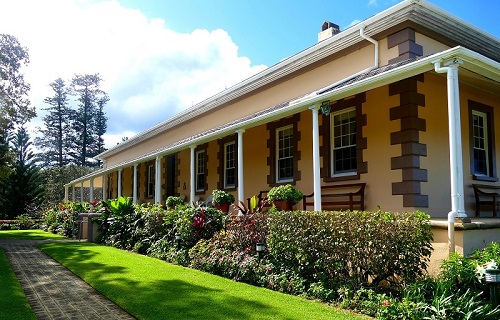Kingston World Heritage Area












Norfolk Island’s Kingston and Arthurs Vale Historic Area (KAVHA) has achieved World Heritage listing. The area is of outstanding significance to the Australian nation. Certainly the fact that it was a convict settlement spanning the era of transportation to eastern Australia between 1788 and 1855 is a large contributor. Another significant fact is that its the only site in Australia to display evidence of early Polynesian settlement. Not to mention 1856 saw the re-settlement of the descendants of the Bounty Mutineers from Pitcairn Island into the Kingston settlement.
Norfolk Island's World Heritage listing
The World Heritage List’s Australian Convict Sites inscription received the addition of Norfolk Island’s Kingston and Arthur’s Vale Historic Area in 2010. This announcement by the World Heritage Committee was welcomed by the Australian Federal Environment Protection and Heritage Minister, Peter Garrett, and Norfolk Island Chief Minister, David Buffett.
“Norfolk Island’s convict site is a rich historical landscape, where lessons from the past are relevant to the whole world,” said Mr Garrett.
“It holds a visual record of harsh and brutal conditions endured by forced penal migrants for more than 60 years from 1788, but it is also associated with innovative developments in the rehabilitation of criminals, that were later modelled to the rest of the world in the 1840s.
“The Norfolk Island story is part of a phenomenon in world history, the forced migration of prisoners to far-flung places, and their subsequent role in developing the cultural life and the economy of the places they were sent to.”
Mr Buffett welcomed the decision as being important for Norfolk Island.
“The Kingston and Arthur’s Vale Historic Area had a reputation as one of the harshest and cruelest of Australia’s penal settlements. A convict settlement spanning 1788-1855, it today comprises a large group of buildings from the convict era, some of which have been modified during the Pitcairn period (from 1856 to the present), substantial ruins and standing structures, archaeological remains, landform and landscape elements.
“The process involved lengthy consultations and much hard work on the part of property managers and the community. I am extremely proud of the Island for getting this site onto the list,” Mr Buffett said.
KAHVA today
Because of the significance of KAVHA to the local population today, the area is a hive of activity. Above all it is home to the Island’s popular beaches, golf course and convict built pier. As a result there are a large variety of activities available in the area. You’ll also find many of the locals enjoying a swim or snorkel in the lagoon, playing a round of golf, walking, running or just relaxing. Not to mention it’s a great place for a BBQ breakfast, picnic lunch, sunset dinner or dropping a line.
KAVHA also has self-guided walks visitors can follow, visits to the Norfolk Island Museums, walks through the convict cemetery, or visits to the Public Research centre at No. 9 Quality Row. To contact the Research Centre – EMAIL.
Australia's World Heritage listings
The other sites that together make up Australia’s 18th World Heritage listing are:
- Old Government House and Domain (NSW)
- Hyde Park Barracks (NSW)
- Cockatoo Island Convict Site (NSW)
- Old Great North Road (NSW)
- Fremantle Prison (WA)
- Brickendon and Woolmers Estates (TAS)
- Darlington Probation Station (TAS)
- Port Arthur Historic Site (TAS)
- Coal Mines Historic Site (TAS)
- The Cascades Female Factory (TAS)
The Australian Convict Sites join more than 850 of the world’s most special places given this prestigious international recognition. Other Australian places also included on the World Heritage List are:
- The Sydney Opera House
- The Great Barrier Reef
- Shark Bay
- Uluru-Kata Tjuta National Park.
The National Heritage List includes The Australian Convict Sites, As a result, national environment law ensures their protection.
*From www.norfolkisland.com.au, courtesy Norfolk Island Tourism


